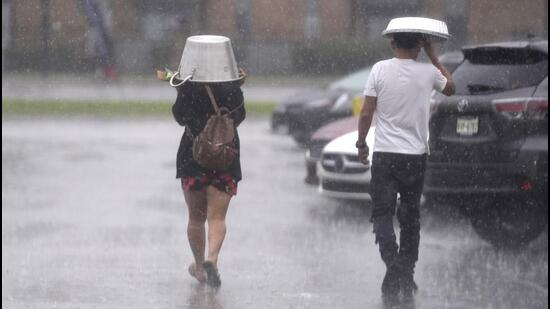Weather Bee: Is this an unusually short La Nina?
It is important to understand what La Nina is before checking whether the current La Nina is an unusually short one.
A World Meteorological Organisation (WMO) update on March 6 said that the ongoing La Nina – it is a cyclical cooling of the equatorial Pacific Ocean that has a cooling effect on global average temperature – that began in December was likely to end after the February-April season. Is it unusual for the event to be this short? The short answer to this question is that the length of the ongoing La Nina is indeed somewhat unusual. However, the answer also depends on how one defines the event. Here is why.

As the brief answer above suggests, it is important to understand what La Nina is before checking whether the current La Nina is an unusually short one. So what is La Nina? While the short description for La Nina given above defines it in terms of temperatures in the equatorial Pacific Ocean, that is not how it was defined initially. It was first discovered in early 1900s as a change in the difference in atmospheric pressure over Darwin in Australia and Tahiti in French Polynesia, and known as Southern Oscillation. It was only in the 1960s that the relation of the Southern Oscillation with Pacific’s temperatures became known.
As the early definition of La Nina suggests, it is not an isolated phenomenon and can be tracked through at least two indicators: sea surface temperatures (SSTs) and atmospheric pressures in the equatorial Pacific. Moreover, given its historical development and its varied impact on local weather, the part of the equatorial Pacific monitored or the criteria used for defining it can also vary according to the needs of the local population. For example, the Australian weather department declared the end of El Nino last year before other weather departments because it uses somewhat different criteria.
To be sure, the different criteria used by different weather departments are still correlated. This means that using any one index to check the length of the ongoing La Nina can at least show us the general trend. One such easy to track index is the Oceanic Nino Index (ONI), which measures the three-month running mean of SST deviations from past averages in the Nino 3.4 region (5°N-5°S, 120°-170°W) of the Pacific. Values of ONI are available from the National Oceanic and Atmospheric Administration (NOAA) from December-February 1950. This shows that only eight of 28 La Nina (29%) events (excluding the ongoing one) have been of the length of four consecutive overlapping seasons (a three-month period) or less, the length the WMO expects the current La Nina to have. This would make the current La Nina shorter than the usual length of a La Nina event.
To be sure, two other caveats must be read while reading the length of the current La Nina. One is that NOAA logs a La Nina in its historical record only if ONI deviation is a cooling of 0.5°C or more for five overlapping seasons. This means that the eight cooling episodes of length shorter than five overlapping seasons and the ongoing one (if it ends by the February-April season) would not count as La Nina at all.
Another caveat has to do with the forecast itself. Forecasts for La Nina are made in probability terms. These forecasts are made not just for La Nina, but also El Nino (positive deviation in ONI of 0.5°C or more in the Nino3.4 region) and neutral conditions (deviations in ONI under 0.5°C), which make up the complete set of possible events. The latest forecast shows that while La Nina is indeed the most probable event up to the February-April season, it is not a close-to-certain event. There is a 59% probability of La Nina in February-April compared to 41% probability of neutral conditions. This means that there is a decent enough chance of Pacific throwing a surprise. That would make the ongoing La Nina (if we were to call the ongoing cooling event in the Pacific La Nina) somewhat rarer than if it lasted four overlapping seasons. Seven of 28 past La Nina events (25%) have lasted for three overlapping seasons or less.
Clearly, there is little doubt that current La Nina event is likely to be unusually short. In fact, it is likely to be short enough to not count as one in some records. In both cases, where its ranking among short spells of cooling in the Pacific ends up, is something we will know only in the coming months.
All Access.
One Subscription.
Get 360° coverage—from daily headlines
to 100 year archives.



HT App & Website







